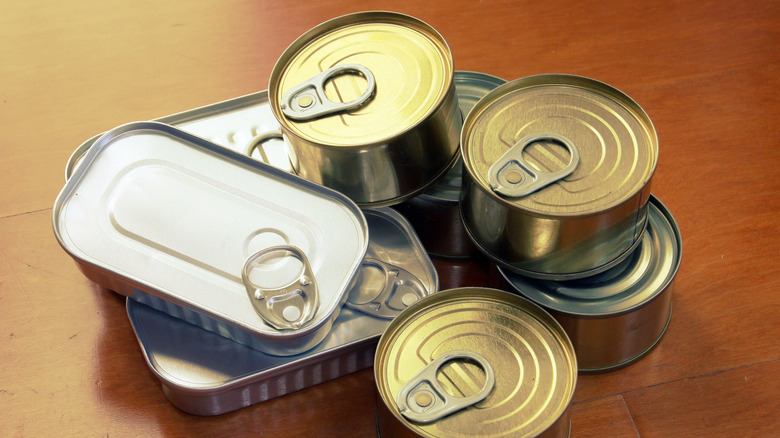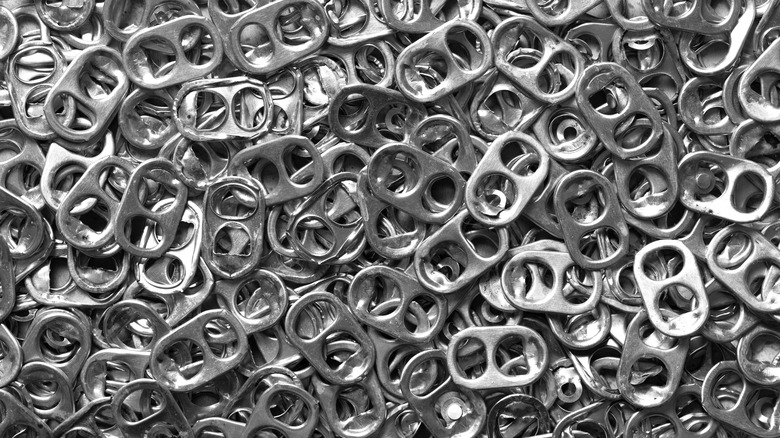The Reason Some Canned Goods Have Pull Tabs And Others Don't
When checking to see if your pantry staples like soups, vegetables, and flour have expired, you might notice that some of your canned goods have pull tabs, but others don't. What's the determining factor here, since pull tabs are considered more convenient? It turns out that manufacturers don't send you on a search for a can opener for no reason. The main deciding point is the cost of both the canned goods and their production.
In terms of production, pull tabs require extra work. Making a tab-free can is as simple as stamping out round pieces from a metal sheet, then sealing these rounds on either end of the can. Producing a pull-tab can calls for scoring the lids for easy opening, then stamping out and attaching tabs. This uses up more materials, takes longer, and requires unique machinery — all of which create additional expenses.
These expenses determine if a company decides to produce pull tabs. Canned foods like name-brand oysters and stuffed olives are generally more expensive than soup or green beans under a generic store brand. Adding a pull tab can help justify the higher price of more expensive goods, as many consumers are willing to pay a bit more for the convenience. Long story short, big name-brand companies tend to spend a bit more to add pull tabs to their goods, since they'll see returns. A company that produces cheaper goods often can't afford the expense of manufacturing tabs, making them not worth it.
Pull tabs took off almost instantly, despite the expenses
Today, consumers in America and many other countries might be used to the convenience of easy-open cans, but they're a fairly new invention. The pull tab came about in 1959, when engineer Ernie Fraze forgot to bring a church key to a family picnic. At the time, church keys were small tools used to punch holes in the top of a can. Fraze was determined to find an alternative to the church key — some kind of can lid that would render any extra tools unnecessary. By 1963, he had invented and patented the easy-open lid, and partnered with Pittsburgh Brewery Co. to test the tabs on 300,000 beer cans.
Needless to say, the pull tab was a hit, with the brewery's sales increasing by 400% in the first year of the experiment. Fraze continued to perfect his design over the years, finding ways to keep users safe from sharp can edges, and to attach the pull tabs more securely so that they didn't fall off. Though it's uncertain how many cans come equipped with pull tabs today, an incredible 150 billion had been produced by 1988. Modern companies like Draft Top have attempted to come up with new, more sustainable can-lid-removing solutions, but only time will tell if Americans are willing to give up the convenience of pull tabs.


